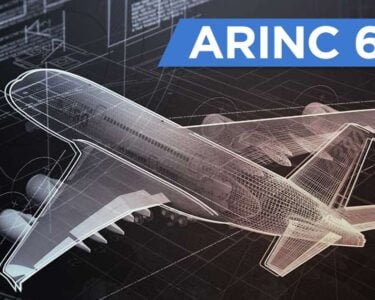Overview of ARINC Standards
In the complex and highly regulated world of aviation, robust and reliable communication systems are paramount for ensuring safety, efficiency, and interoperability among aircraft systems. The Aeronautical Radio Incorporated (ARINC) standards play a crucial role in this domain, setting the guidelines and protocols for avionic equipment used in aircraft. These standards, developed by the Airlines Electronic Engineering Committee (AEEC), encompass various communication protocols designed to meet the specific needs of the aviation industry.
Importance of ARINC 629 in Aviation
Among these standards, ARINC 629 stands out as a significant milestone in the evolution of avionic communication systems. Introduced in the early 1990s, ARINC 629 was developed to address the limitations of its predecessor, ARINC 429, and to provide a more advanced, flexible, and efficient communication framework. This protocol has been instrumental in enhancing the data transfer capabilities within aircraft, allowing for more sophisticated and integrated avionics systems. Its decentralized control mechanism and high data throughput have made it the backbone of many modern commercial and military aircraft.

Technical Specifications of ARINC 629
Architecture and Topology
Network Layout
ARINC 629 utilizes a multi-transmitter data bus architecture, enabling multiple systems to communicate over a common bus without a central controller. This decentralized topology is crucial for enhancing redundancy and reliability in aviation systems.
Connection Types
The protocol supports two main types of connections:
- Direct Coupling: Systems connect directly to the bus using bus couplers.
- Transformer Coupling: Systems connect via transformers, providing electrical isolation and protection against transients.
Data Transmission and Protocols
Data Frame Structure
ARINC 629 data frames are composed of several fields, including:
- Preamble: Synchronizes the receiver with the incoming data stream.
- Label: Identifies the type of data being transmitted.
- Data Words: Contain the actual payload data, typically 20 bits long.
- Parity Bit: Ensures data integrity through error checking.
Transmission Modes
The protocol supports two primary transmission modes:
- Broadcast Mode: Data is sent to all receivers on the bus simultaneously.
- Addressed Mode: Data is sent to a specific receiver identified by an address field in the data frame.
Timing and Synchronization
Clock Synchronization Mechanisms
ARINC 629 employs a distributed clock synchronization mechanism, where each system on the bus generates its own clock signal. This decentralized approach ensures that communication is maintained even if one system’s clock fails.
Timing Requirements
The protocol specifies strict timing requirements to ensure data integrity and prevent collisions. These include:
- Bit Timing: Precise timing for each bit in the data frame.
- Inter-Frame Gap: Minimum time interval between consecutive data frames to avoid overlap and collisions.
Error Handling and Redundancy
Error Detection and Correction Techniques
ARINC 629 incorporates several error detection and correction mechanisms, including:
- Parity Check: Ensures each data frame’s integrity by adding a parity bit.
- Cyclic Redundancy Check (CRC): Provides a more robust error detection method for critical data.
Redundancy Strategies
To enhance reliability, the protocol supports redundancy through:
- Multiple Bus Configurations: Systems can be connected to multiple buses, ensuring communication continuity if one bus fails.
- Hot Standby Systems: Backup systems can take over in case of primary system failure, without interrupting data flow.
Key Features of ARINC 629
Decentralized Control Mechanism
Unlike centralized systems, ARINC 629 employs a decentralized control mechanism where each system can independently transmit data without relying on a central controller. This design significantly improves system reliability and reduces the risk of a single point of failure.
Bus Access Methods
The protocol uses a Carrier Sense Multiple Access/Collision Avoidance (CSMA/CA) method for bus access, ensuring that systems check for bus availability before transmitting data, thereby minimizing collisions and maximizing bus utilization.
Priority and Arbitration Schemes
ARINC 629 includes priority schemes to ensure that critical data is transmitted with higher priority over less critical information. Arbitration mechanisms resolve conflicts when multiple systems attempt to transmit simultaneously.
Data Rate and Bandwidth Utilization
The protocol supports a data rate of up to 2 Mbps, providing sufficient bandwidth for various avionics applications. Efficient bandwidth utilization is achieved through dynamic allocation based on system demands.
Real-time Communication Capabilities
Designed for real-time communication, ARINC 629 ensures low-latency data transmission, which is crucial for time-sensitive applications such as flight control and navigation systems.
Implementation Details
Hardware Requirements
To implement ARINC 629, the following hardware components are typically required:
- Interface Modules: Devices that connect aircraft systems to the ARINC 629 bus.
- Cabling and Connectors: Shielded twisted-pair cables and connectors designed to minimize electromagnetic interference (EMI).
Software Requirements
Implementation also involves specific software components, including:
- Driver Software: Facilitates communication between the aircraft systems and the ARINC 629 bus.
- Configuration Tools: Software tools used to configure and manage the ARINC 629 network, ensuring proper setup and operation.
Performance Metrics
Data Throughput
ARINC 629’s efficient bus access methods and high data rate support substantial data throughput, enabling the transmission of large volumes of data between aircraft systems.
Latency and Jitter
The protocol’s real-time communication capabilities ensure minimal latency and jitter, providing timely and reliable data delivery essential for critical avionics functions.
Reliability and Robustness
ARINC 629’s robust error handling and redundancy features contribute to high reliability, making it suitable for the demanding environment of aviation systems.
Scalability
The protocol’s decentralized architecture and flexible bus configuration options allow for easy scalability, accommodating the growing complexity and number of systems in modern aircraft.
Conclusion
ARINC 629 represents a significant advancement in aviation communication protocols, offering a decentralized, reliable, and efficient means of data transmission. Its robust error handling, real-time capabilities, and flexible architecture make it an essential component in the avionics industry. As aviation technology continues to evolve, ARINC 629 remains a critical standard for ensuring seamless and reliable communication between aircraft systems.






